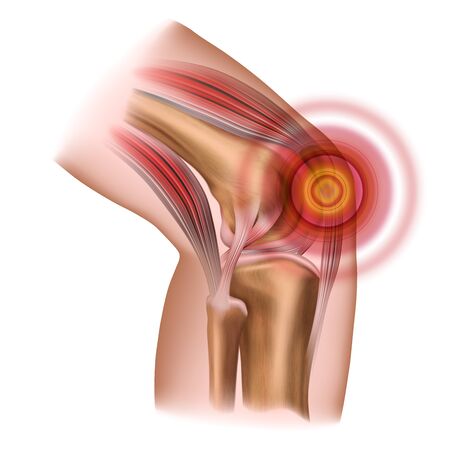Understanding Tattoo Removal Procedures in the UK
Tattoo removal has become increasingly popular across Britain, with more people seeking safe and effective ways to erase unwanted ink. When considering tattoo removal, it’s essential to understand the main procedures available and how they align with UK standards. The most widely used method is laser tattoo removal, which works by breaking down the ink particles in your skin using high-intensity light pulses. This technique is considered the gold standard due to its effectiveness and safety profile when performed by a qualified professional. Other alternatives, such as dermabrasion and surgical excision, are less common but may be offered in specific circumstances or for smaller tattoos.
In the UK, strict regulations ensure that tattoo removal clinics adhere to robust health and safety guidelines. Professionals must operate in licensed premises and follow protocols set out by local councils and national bodies like the Care Quality Commission (CQC) or Healthcare Improvement Scotland (HIS), depending on location. These measures protect clients from unnecessary risks, ensuring practitioners have the appropriate training and equipment. By choosing a reputable clinic that complies with British regulations, you can feel confident that your treatment will be conducted professionally and safely, minimising discomfort and reducing potential complications.
Pain Levels: What to Expect
Tattoo removal is often associated with discomfort, but it’s important for British clients to understand that pain levels can vary widely depending on individual tolerance, the size and location of the tattoo, and the technology used. Most people describe the sensation as similar to having a rubber band snapped against the skin, or like tiny hot pinpricks. While it can be uncomfortable, rest assured: for the majority of clients in the UK, the process is manageable, and modern clinics prioritise your comfort throughout each session.
Typical Sensations During Tattoo Removal
Clients commonly report a range of sensations during laser tattoo removal. Here’s a quick overview:
| Sensation | Description | How Long It Lasts |
|---|---|---|
| Stinging/Burning | Feels like a rubber band snap or sunburn | During & immediately after treatment |
| Tingling/Numbness | Mild tingling or numbness at treated site | A few minutes post-treatment |
| Warmth/Heat | A noticeable warming of the skin area | Up to several hours after session |
| Soreness | Mild soreness similar to light bruising | 1-2 days following treatment |
Guidance on Pain Tolerance
Your personal pain threshold will play a significant role in your experience. Some areas—like ankles, wrists, or ribs—tend to be more sensitive due to thinner skin. British clinics are very aware of these variations and will discuss your concerns before starting. If you’re particularly anxious about discomfort, don’t hesitate to communicate openly with your practitioner; together, you’ll find ways to make the process as smooth as possible.
Common British Clinic Practices for Managing Discomfort
- Numbing Creams: Many reputable UK clinics offer topical anaesthetic creams applied prior to treatment to reduce sensations.
- Cryogenic Cooling: Devices that blow cold air onto the area being treated are commonly used across Britain to soothe the skin and minimise pain.
- Paced Sessions: For larger tattoos, splitting removal into multiple shorter sessions can help manage discomfort effectively.
- Aftercare Advice: Clinics will provide thorough aftercare instructions tailored for British weather conditions and lifestyles, ensuring optimal healing with minimal irritation.
Your Confidence Matters
Remember, experiencing some degree of pain is entirely normal—and temporary. By choosing a trusted British clinic and communicating your needs clearly, you set yourself up for a smoother journey. Stay confident: every step brings you closer to clear skin and renewed self-assurance.

3. Potential Risks and Complications
When considering tattoo removal in the UK, it’s essential to be aware of the potential risks and complications involved—honesty is key to making a confident, informed decision. While laser tattoo removal is widely regarded as safe when performed by certified British practitioners, some possible side effects can arise. The most commonly discussed risk is scarring; although rare, it can occur if aftercare instructions are not followed or if the skin reacts unusually. Infection is another risk, usually prevented with good hygiene practices and professional-grade equipment, but it remains important to monitor your skin for any signs of redness or unusual swelling post-treatment. Skin discolouration, such as hyperpigmentation (darkening) or hypopigmentation (lightening), can affect those with certain skin types or tones more noticeably, but skilled UK specialists will always assess your individual needs and explain how to minimise this outcome. Reputable clinics across Britain adhere strictly to health and safety regulations, use advanced technology, and provide clear aftercare guidance to further reduce these risks. Trust that experienced professionals are committed to safeguarding your wellbeing while supporting you through every stage of the removal process.
4. Side Effects After Removal Sessions
Tattoo removal is a process that can be both physically and emotionally challenging, but understanding the typical side effects and aftercare guidance can help you navigate it with confidence. Whether you’re undergoing laser tattoo removal or another technique, British practitioners will always explain what you might experience post-session—both in the short term and over a longer period. It’s crucial to be prepared so you can support your skin’s healing and minimise any risks.
Short-Term Side Effects
Immediately after a session, it’s completely normal to notice some temporary changes in your skin. These are typically mild and fade within days to a couple of weeks. Here’s a quick overview:
| Side Effect | Description | Duration |
|---|---|---|
| Redness & Swelling | The treated area may look inflamed and feel warm to the touch. | Few hours to several days |
| Blistering | Small blisters can develop as part of the body’s natural healing process. | Up to a week |
| Itching & Dryness | Your skin may feel itchy or flaky as it heals. | Several days to one week |
| Scabbing | A light scab might form over the treated tattoo area. | One to two weeks |
Longer-Term Side Effects
While most side effects resolve quickly, some people may notice longer-lasting changes. These are less common but still important to know:
- Hyperpigmentation or Hypopigmentation: The skin could appear darker (hyperpigmentation) or lighter (hypopigmentation) than surrounding areas for several months after treatment.
- Texture Changes: Rarely, the treated skin might feel slightly different or thicker for an extended time.
- Scarring: With proper aftercare, scarring is uncommon, but if the area is picked at or not cared for, there is a small risk.
Aftercare Guidance from UK Practitioners
Bespoke aftercare advice is a hallmark of reputable British tattoo removal clinics. Following these recommendations diligently will help your skin heal safely and reduce potential complications:
- Keep It Clean: Gently wash the area with lukewarm water and fragrance-free soap.
- Avoid Picking: Do not scratch or pick at scabs or blisters, as this can cause infection or scarring.
- Soothe and Protect: Use recommended ointments (often petroleum jelly) and cover with a sterile dressing if needed.
- No Sun Exposure: Shield the area from direct sunlight; use high-factor SPF if exposure is unavoidable.
- Avoid Swimming and Saunas: Stay away from pools, hot tubs, and saunas until fully healed to prevent irritation or infection.
- Stay Hydrated and Healthy: Good hydration and nutrition support your body’s natural repair mechanisms.
If You Experience Unusual Symptoms
If you notice excessive pain, pus, spreading redness, or any other signs of infection, don’t hesitate—contact your practitioner or NHS 111 for guidance. Prioritising your wellbeing is key on this journey toward clear skin.
5. Managing Your Expectations: Removal Outcomes
If you are considering tattoo removal in the UK, it’s essential to approach the process with realistic expectations about what can be achieved. Complete removal is possible for many clients, but the outcome can vary significantly depending on several factors—most notably, tattoo size, colour, and your unique skin type.
Understanding the Variables
Firstly, larger tattoos often require more sessions and may leave some faint traces even after a full course of treatment. Similarly, certain colours such as green, blue, and yellow are notoriously more stubborn to remove compared to black or dark inks. This is because laser technology targets specific pigment wavelengths, and some colours do not absorb the laser light as effectively.
The Role of Skin Type
Your skin type also plays a vital role in how your body responds to treatment. Generally speaking, individuals with lighter skin tones tend to see faster fading as there is less risk of pigmentation changes. However, clinics across Britain have developed protocols for treating all skin types safely and effectively, so it’s important to discuss your individual needs with a qualified practitioner.
UK-Specific Success Rates and Client Experiences
In the UK, studies suggest that around 70% of clients achieve significant fading or near-complete removal after 6–10 sessions. However, some people may require additional treatments or find that a faint shadow remains. Many British clients report satisfaction with their results even if complete erasure isn’t achieved—especially when the treated area blends well with their natural skin tone or allows for successful cover-up tattoos.
Remember: every tattoo and every person is different. Seeking advice from experienced UK practitioners and reading reviews from local clients can help set honest expectations. By staying informed and patient throughout your journey, you’ll be able to make confident choices about your tattoo removal experience.
6. Choosing a Reputable British Clinic
When it comes to tattoo removal in the UK, selecting a reputable clinic is absolutely vital for your safety and peace of mind. Tattoo removal isn’t just about fading ink—it’s about protecting your skin and wellbeing throughout the process. Here’s how you can confidently choose a trustworthy provider and ensure your experience is as smooth as possible.
Tips for Finding Qualified, Insured Practitioners
First and foremost, always check that your practitioner holds the necessary qualifications. In the UK, reputable clinics will have practitioners who are trained in laser treatments and hold relevant certifications. Don’t hesitate to ask about their training background—any true professional will be proud to share their credentials with you. Additionally, make sure the clinic has comprehensive insurance that covers both the practitioner and the treatments provided. This protects you in the unlikely event that something goes wrong.
Understanding British Regulatory Bodies
It’s important to know that different parts of the UK have specific regulatory requirements for cosmetic procedures like tattoo removal. For example, in England, clinics should be registered with the Care Quality Commission (CQC) if they provide regulated activities. In Scotland, Wales, and Northern Ireland, local councils often oversee licensing and health standards. Always look for clear evidence of registration or licensing on a clinic’s website or displayed within their premises—you deserve nothing less than full transparency.
The Importance of Patch Tests and Consultations
A responsible British clinic will always offer a patch test before beginning your treatment. This small test helps determine how your skin reacts to the laser and reduces the risk of unexpected side effects. Equally important is an in-depth consultation before any procedure starts. Use this time to ask questions about the process, discuss your medical history, and set realistic expectations for pain, risks, and results. If a clinic skips these steps or rushes you into booking sessions, consider it a red flag.
By taking these precautions—verifying qualifications and insurance, checking regulatory compliance, and insisting on patch tests and consultations—you empower yourself to make informed choices. Remember: quality care leads to better outcomes and keeps you safe every step of the way.
7. Self-Care and Support in the UK
Tattoo removal can be a journey, and taking good care of yourself both physically and emotionally is crucial throughout the process. Empowering yourself with the right information and support can make all the difference. Here’s how British clients can prioritise self-care, connect with local resources, and know where to seek help if something doesn’t feel right.
Empowering Your Healing Journey
After each session, your skin needs time to recover. Follow your practitioner’s aftercare advice closely—this often includes keeping the area clean, avoiding direct sunlight, and resisting the urge to pick at scabs. A gentle British-made moisturiser, such as E45 or Aveeno, can help soothe irritation. Remember, healing varies from person to person, so be patient with yourself and celebrate small milestones along the way.
Finding Local Resources
The UK offers a wealth of resources for those undergoing tattoo removal. The NHS website provides clear guidance on skin health, while many private clinics offer helplines or online chat services for aftercare questions. If you’re unsure about any aspect of your recovery, don’t hesitate to contact your clinic or GP—they’re there to help you make informed decisions about your wellbeing.
Support Groups and Community Connections
You’re not alone in this experience. Online forums like Mumsnet or dedicated Facebook groups for tattoo removal in the UK can be invaluable places to share stories, ask questions, and gain reassurance from others who understand what you’re going through. Some local community centres even host wellness workshops that can boost your confidence during this transition.
When Something Doesn’t Feel Right
If you notice unexpected pain, swelling, discharge, or signs of infection, trust your instincts—these are not normal side effects. Seek professional medical advice promptly via your GP or by calling NHS 111 for urgent but non-emergency issues. It’s always better to err on the side of caution; you deserve peace of mind as well as physical safety.
Your Wellbeing Comes First
Above all, remember that self-care is an act of self-respect. By staying informed and seeking support when needed, you empower yourself to navigate tattoo removal confidently and compassionately. You’ve already taken a bold step—now give yourself permission to prioritise your health every step of the way.

